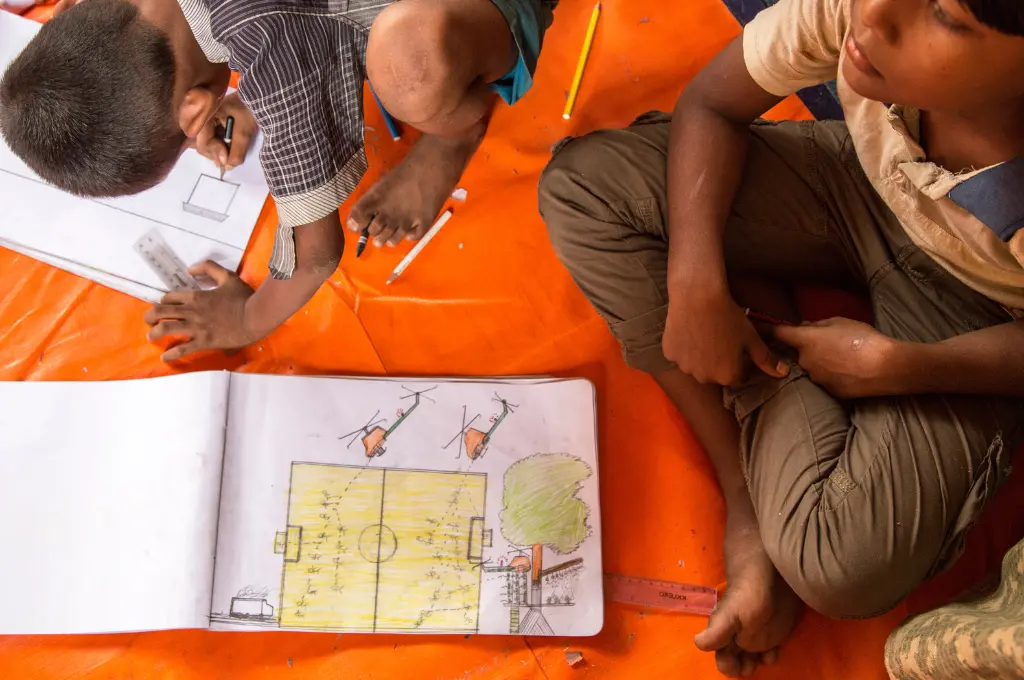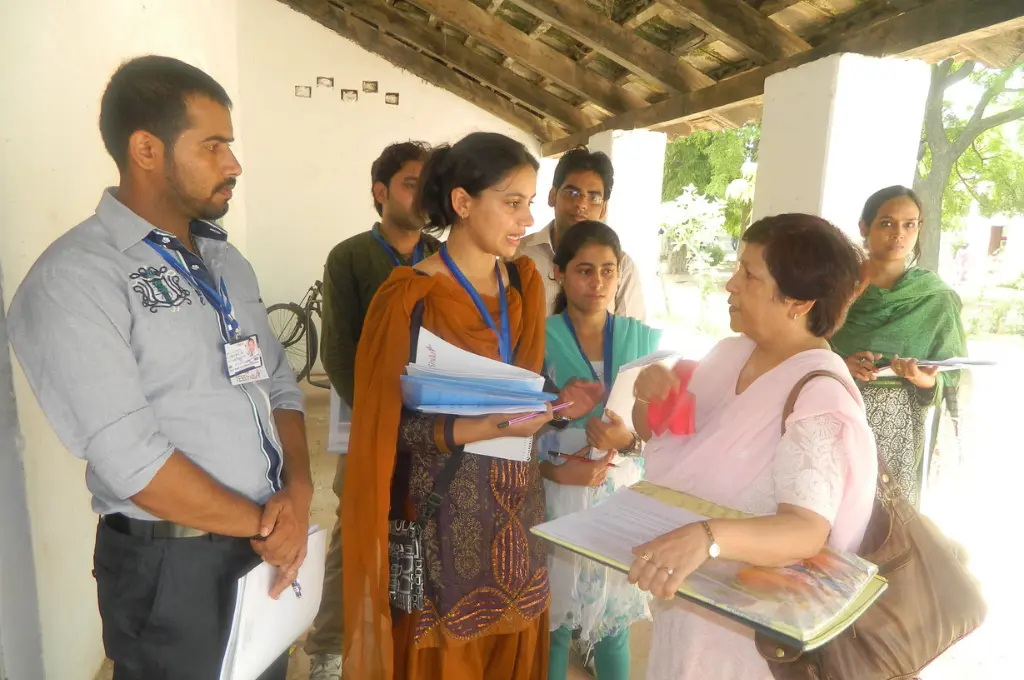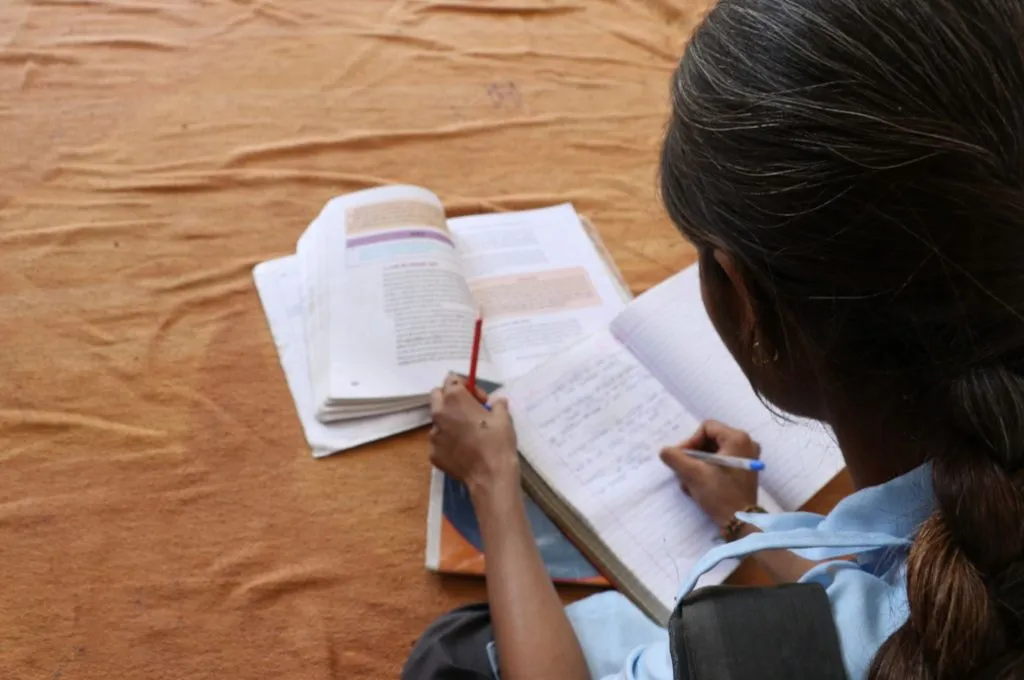As development practitioners, we recognise that data is critical in conceiving, implementing, and monitoring community-based interventions. Grassroots evidence is useful to understand the impact (or lack thereof) of interventions and make a case for policy changes. We primarily rely on the expertise and objectivity of researchers, academics, and subject-matter experts to generate sound data, present evidence-based learnings, and guide decision-making, even within highly localised contexts. However, grassroots organisations and frontline practitioners are rarely involved in these research processes, when in fact they generate valuable data about the community during service delivery.
There are very few resources available for grassroots civil society organisations (CSOs) to train their frontline practitioners in collating, interpreting, and meaningfully utilising their data to inform interventions or policies. Such an exclusionary approach widens the existing research–practice gap.
The role of CSOs in research
We need to make research—its agenda, skills, and findings—accessible to all grassroots nonprofits and fieldworkers in order to create horizontal, ethical research processes rather than extractive ones. This is especially crucial in generating comprehensive evidence on sensitive issues of gender, health, and violence.
Indian administrative data (such as the National Crime Records Bureau data) on gender-based violence (GBV), for instance, relies solely on reported incidents of violence, which frequently results in underreporting. Methodological and ethical issues too limit the scope of population-based surveys. The most recent National Family Health Survey (NFHS)-5, for instance, does not include data on the experiences of domestic violence for ever-married women below 18 years of age. This was done to protect the confidentiality of the survey respondents and avoid compulsory reporting by NFHS surveyors of sexual offences against children as mandated by POCSO Act 2012.
CSOs can supplement these existing evidence gaps and shed light on aspects of violence and its consequences that are otherwise impossible to capture. However, in India, there is no mechanism to integrate data collected by grassroots CSOs into administrative statistics. This exclusion stems from the perception that data from these nonprofits is of poor quality and therefore unusable.
But grassroots organisations and their frontline practitioners, who often belong to marginalised communities themselves, are intimately aware of the trends and motivations of violence as well as the context-specific needs of the survivors. Their continuous engagement with the community means they are uniquely placed to provide a nuanced interpretation of GBV data that considers the intersections of factors such as caste, religion, age, and sexuality, which exacerbate the intensity and consequences of violence.
To ensure the participation of grassroots nonprofits and fieldworkers in the process of data collection and evaluation, Centre for Enquiry into Health and Allied Themes (CEHAT) has partnered with grassroots CSOs that hold data and information critical to understanding GBV, thus building a ground-up flow of evidence and best practices. Here’s how this worked.
1. Shifting ownership of research
CEHAT’s initiative is based on the recognition that grassroots organisations consistently collect and record data on GBV through the course of their everyday work, but lack the resources to effectively use this data to influence intervention and policy. To change this, a feminist participatory approach was built that helped frontline practitioners, who predominantly work on the field, take charge of designing and implementing their research and interpreting data.
In order to do this, a research agenda and subsequent methodology were also collaboratively created. Representatives from partner organisations shared their requirements, and research questions were co-developed to align with their existing work with young girls and women. This approach acknowledged that grassroots CSOs work in different socio-economic contexts and the research agenda must supplement grassroots interventions. Frontline practitioners were then trained on research ethics and data interpretation and analysis. They were also trained in building user-friendly, accessible, and sustainable management information systems (MIS) on Excel to record specific and relevant data points about their interventions for further analysis. Most CSOs already maintain service records in various formats such as field notes, registers, and intake forms. And frontline practitioners are often first responders in cases of violence and note down several qualitative aspects of the case as well. Suitable ways for data entry and management and changes to intake forms to capture relevant data points were also suggested. This helped partner organisations in the standardisation and digitisation of past and present service records in an MIS to facilitate reuse of data.
Frontline practitioners had never evaluated their field data in this manner. When they undertook the data cleaning and coding exercise, it gave them an opportunity to reflect on their documentation process, identify information gaps, and reveal contextual patterns of violence. For example, their experience on the field impacted how they captured data on natal family violence. Most stakeholders (lawyers, police, caseworkers, etc.) are not able to identify the many forms of natal family violence. Organisations saw the opportunity to use data in expanding the understanding of natal family violence beyond physical and sexual abuse to include emotional abuse, limited access to economic resources, restriction of mobility or the right to make choices, etc. A partner organisation working with sexual violence survivors from marginalised communities in rural India modified their documentation formats. This was done so they could capture the unsupportive responses of the natal family towards sexual violence survivors as the girls are often forced to get married to the abuser to protect family honour. Partner organisations thus began seeing the value of viewing their service data from an action research lens and were able to take back ownership of the research outcomes.

2. Identifying usefulness of research
For frontline practitioners, it is especially difficult to see the usefulness or relevance of research in their daily work, unless they are involved in the analysis process. Their participation in analysis creates and completes the feedback loop; their experiential, qualitative, and ‘anecdotal’ knowledge is validated by quantitative evidence. It was therefore stressed that frontline practitioners spearhead the data analysis by deciding what issues are studied while accounting for factors such as age, health consequences, and nature of interventions.
Building capacities of community-based caseworkers is also important as they are often the first point of contact for women facing violence. A nonprofit in Uttar Pradesh that provides legal-aid services analysed 399 cases of survivors who had approached their community-based caseworkers for support in 11 districts of the state in 2020–21. This revealed that a substantial number of survivors (31 percent) had never sought any support for violence before contacting the caseworker.
Building research capacities and enabling the process of collecting data, entering case data into a spreadsheet, coding and analysing also highlights quantitative trends that are otherwise only visible on a case-by-case basis. A partner organisation from Maharashtra working on women empowerment, for example, conducted a primary survey to understand the needs of adolescents. The survey was grounded in their casework with survivors of domestic violence whose children often need support. They promptly conducted a needs assessment of the adolescents to understand their experiences and document the support services required by them. Based on these findings, the organisation implemented an intervention to increase awareness among adolescents about their rights and to provide career counselling services.
3. Sharing research findings with other CSOs
Evidence from grassroots CSOs can be used to foster convergence and collaboration between organisations working on the same issue but from different vantage points such as gender, age, caste, health, education, and rural/urban locations. CEHAT’s study of service records from a hospital-based crisis centre in Mumbai revealed the biases of medical professionals and legal challenges that hinder young women’s access to safe abortion, especially in instances of rape. On the other hand, a partner organisation working across rural areas in India found that adolescent survivors’ caste location posed several additional structural barriers to reporting pregnancies and undergoing abortions in cases of rape.
In a similar vein, partner organisations from Rajasthan found the perpetuation of patriarchal customary practices such as ata-sata (a bride exchange where the husband’s sister marries the bride’s brother) and nata-pratha (selling of girls under the guise of marriage)through decades of service data and field experiences. This knowledge from the grassroots sheds light on women’s experience of domestic violence at the hands of their natal and marital families in the absence of laws. Other organisations noticed a distinct disparity in the reporting of domestic violenceby natal families as compared to marital families.
The evidence from service data of grassroots CSOs can become a catalyst in setting research agenda.
An Uttar Pradesh–based nonprofit reflected on case histories to recategorise instances of child marriage and curbing of choice in romantic relationships as forms of natal family violence. When an individual chooses a romantic partner—particularly from a different caste, class, or religion—their families might disapprove and try to separate the couple. In the case of girls, this is done by restricting their mobility, forced marriage, and in some instances legal action against the boy. Through the case study, it became apparent that young women (between 18 and 37 years of age) are reporting GBV, but women seeking redress are better able to identify and address domestic violence within marital homes than in natal homes.
Using different lenses to study universal issues such as rape and domestic violence can help develop an intersectional and comprehensive understanding of forms of GBV, and how they manifest in different contexts. But to work towards common response strategies, data must be shared for engagement with the stakeholder. To this end, CEHAT organised two research dissemination workshops where practitioners presented their findings to approximately 50 practitioners and researchers from like-minded organisations working on the issue of GBV. This promotes mutual learning among the organisations and alliance building for policy engagement. Partner organisations have since actively shared data with national and state-level networks working on GBV. They have published fact sheets and local and national news articles highlighting their field research.
The evidence from service data of grassroots CSOs can become a catalyst in setting research agenda and addressing inequalities on the ground.
Challenges and way forward
While all organisations, big or small, have the potential to generate sound evidence, this comes with its fair share of challenges.
Funding: Developing research and analytical capacities, especially at the grassroots, requires adequate time and money. Funding flows for innovating grassroots research can only be created with a top-down recognition of the value that participatory research brings to programming efforts. Yet, funding for the same is negligible. A paucity of funds leads to struggles at every stage of research. Many organisations have conveyed the need for a dedicated data entry officer to manage data. Without this, there is an additional burden on frontline practitioners—who are already stretched thin with daily casework, follow-ups, field meetings—to work on data entry. Timely utilisation of grassroots data requires funds for data storage and up-to-date technologies that ease data management processes.
Capacity building: Regular capacity building is another critical challenge that needs support. Organisations note that even after data entry is completed, it has to be cleaned and meaningfully analysed. However, until the entire team has clarity on the relevance and usefulness of this data, they will not understand why it must be so maintained. This clarity is only achieved by building the research capacities of the entire team along with regular dissemination of findings. Establishing avenues for continuous communication between team members is also imperative to adequately analyse the emerging data and its link to micro and macro trends. Building the research capacities of grassroots CSOs is the first step in equipping them to present their evidence across national and international forums. More importantly, it will enable CSOs to use their own data while developing pitches for present and future funders that emphasise long-term investments for grassroots research endeavours.
Grassroots organisations and their frontline practitioners are key data holders possessing a wealth of service information and experiential insights. They are uniquely placed to collect sensitive and accurate data in an ethical manner without compromising the safety and privacy of people. Tapping the potential of grassroots organisations is the missing link in designing and implementing contextual and impactful interventions and policies. Championing time and monetary investments in building research capacities at the grassroots can transform service data into nuanced knowledge that drives social change.
Sangeeta Rege and Sanjida Arora contributed to this article.
—





